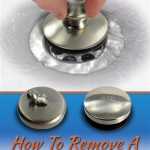Essential Aspects of Silicone Sealant for Bathtubs
Maintaining a pristine and functional bathroom requires meticulous attention to detail. Among the crucial elements that play a pivotal role in ensuring a seamless and leak-proof bathing experience is silicone sealant for bathtubs. This versatile material provides an effective barrier against water damage, preventing mold and mildew growth while enhancing the overall aesthetics of your bathroom.
To ensure optimal performance and longevity of your silicone sealant, it is essential to understand its key aspects:
Type and Composition
Silicone sealants are primarily composed of either acetoxy-cure or neutral-cure silicone. Acetoxy-cure sealants release acetic acid during the curing process, which produces a pungent odor. They are typically more affordable and commonly used in outdoor applications. Neutral-cure sealants, on the other hand, emit minimal odor and are more suitable for indoor use, such as bathrooms. They are also more flexible and resistant to discoloration over time.
Preparation and Application
Proper preparation of the bathtub surface is crucial for ensuring a strong bond. Thoroughly clean the area to remove any dirt, oil, or soap residue. Ensure the surface is completely dry before applying the sealant. Apply the sealant evenly along the seam, using a caulk gun or spatula. Smooth the sealant with a damp finger or a plastic tool to create a neat and professional finish.
Curing Time and Maintenance
Allow the silicone sealant sufficient time to cure and reach its full strength. The curing time varies depending on the type of sealant used and the environmental conditions. Follow the manufacturer's instructions carefully. Once cured, the sealant should form a watertight seal. Clean the sealant regularly with mild soap and water to remove any soap scum or mildew buildup, ensuring its longevity and effectiveness.
Durability and Resistance
Silicone sealant is renowned for its durability and resistance to mold, mildew, and UV rays. It can withstand extreme temperatures and moisture, making it an ideal choice for bathroom applications. Its flexibility allows it to accommodate movement and vibrations without compromising the seal.
Choosing the Right Sealant
When selecting a silicone sealant for bathtubs, consider the following factors: the type of bathtub (acrylic, porcelain, fiberglass), the width of the seam, and the desired color. Match the sealant to the bathtub material to ensure compatibility and a seamless finish. Opt for a sealant with antifungal properties to prevent mold and mildew growth.
By understanding and considering these essential aspects of silicone sealant for bathtubs, you can effectively protect your bathroom from water damage, enhance its aesthetics, and enjoy a leak-free bathing experience for years to come.

How To Seal A Bath Properly
Top Tip On How To Apply Silicone Sealant With Step By Pictures

Ge Supreme Silicone 10 1 Oz White Kitchen And Bath Caulk 2709108 The Home Depot

Bath Silicone Sealant Diy Bostik

Ge Silicone Ii Multi Purpose Kitchen Bath Sealant Waterproof Caulk Almond 299 Ml Canadian Tire

Caulk Or Sealant Which Is Right For Your Bathtub Badeloft

Ge Silicone Ii 299 Ml Bathtub Sealant White Rona

How To Caulk A Bathtub Like Pro

Tommy S Trade Secrets How To Silicone A Bath

Ge Silicone Ii 299 Ml Bathtub Sealant White Rona








